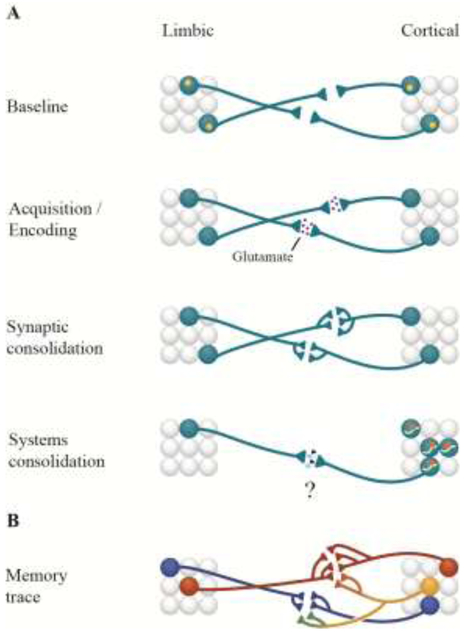Figure 1.
Molecular Mechanisms of the Memory Trace. (A) At baseline, increased levels of CREB (yellow circles) are thought to determine which neurons are preferentially incorporated into a memory trace (blue circles). Acquisition/encoding of a long-term memory involves increased glutamatergic transmission between neurons of a memory trace. Synaptic consolidation and the transition from short-term to long-term memory involves the transcription of new genes, new proteins, and synaptic growth. Systems consolidation involves a greater reliance on cortical areas with the passage of time, in addition to epigenetic changes (e.g., methylation; orange circles) in genes involved in learning and memory. An important future direction (question mark) is in understanding if/how RNA-binding proteins (light blue diamonds) and modifications to the RNA they carry as well as RNA packaged into exosomes (black triangles) contribute to systems consolidation. (B) Recent progress has dissected some of the principles of how individual memories are represented in the brain. Stronger memories (orange circles) involve greater initial synaptic connectivity between brain regions relative to weaker memories (blue circles). Moreover, similar memories acquired close in time recruit an overlapping ensemble of neurons (yellow circle). However, these neurons can represent individual memories in a synapse-specific fashion (light orange vs. green processes). An important direction for future research would be to identify the molecular mechanisms which control how similar or stronger memories within overlapping ensembles are preserved during systems consolidation.

